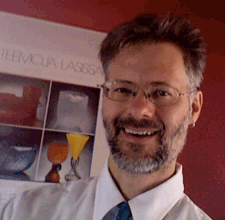Pilgrim Reindeer in Pisa, 1348
a free multimedia novel by
Thomas A. DuBois, University of Wisconsin-Madison
 |
Pilgrim Reindeer in Pisa, 1348 a free multimedia novel by Thomas A. DuBois, University of Wisconsin-Madison |
|
|
|
Part III. Italy. 51. Lucca [March 24, 1348]
What can I say? Lucca is every folklorist's dream come true: a place with marvelous legends, facinating customs, and great beauty. Puccini picked a good city to be born in.
I wanted to build further on Bávlos's desire to identify with Iesh, his looking for ways to see him as Sámi. The name Lucca sounds like the Sámi verb lohkat, "to tell or to count," and so, Bávlos thinks it will be the place that lohká/tells him about Christ. Once he gets there, he finds both an unusual lesson about how theft can be a holy act, as well as an image of Christ that speaks to him in Sámi. Of course, I am setting things up for the next chapters, in which Bávlos learns about St. Francis of Assisi, another medieval mystique who had conversations with a crucifix.
On his drum head, Bávlos includes an image of St.Zita alongside his images of the Virgin and St. Fina at the very bottom of his drum. This threesome of saints is reminiscent of the Sámi threesome of goddesses that guarded the Sámi home and that often figure prominently on Sámi shamanic drums.